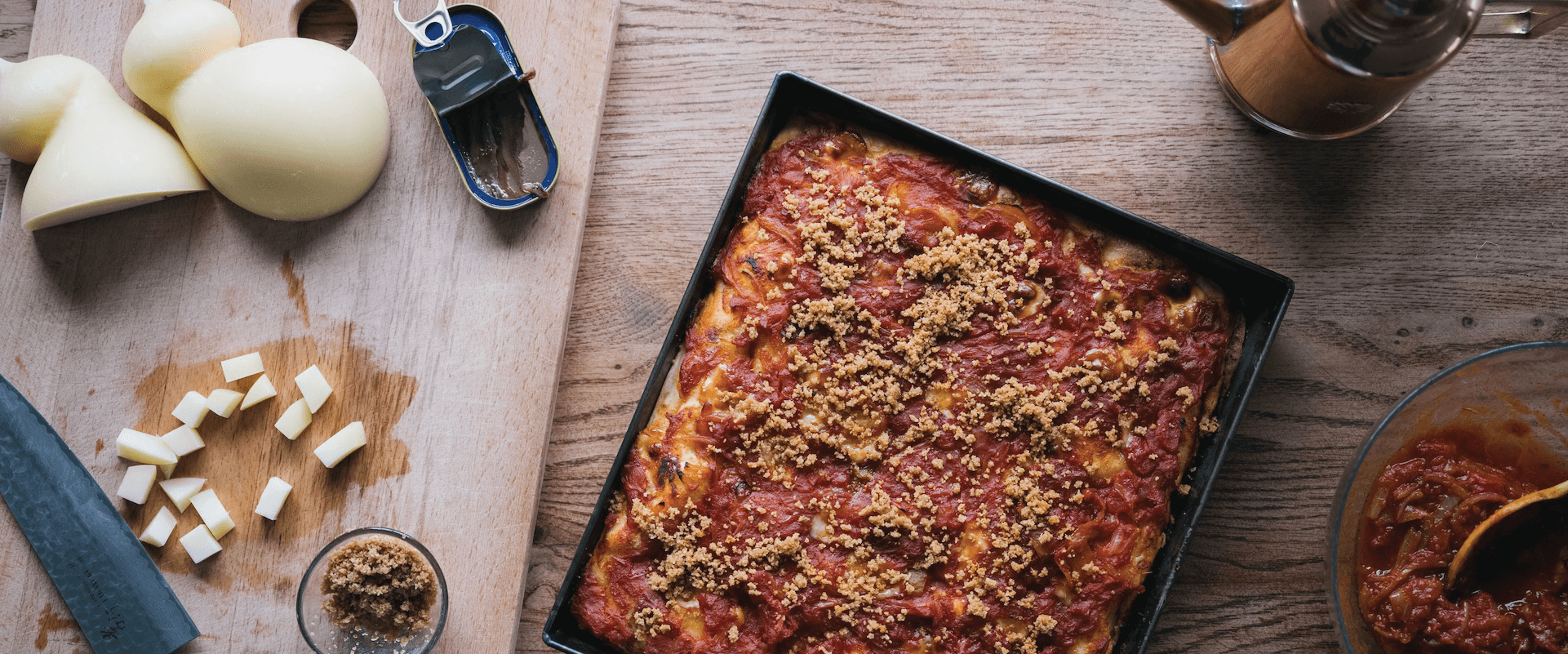Why use salt?
A dough without salt is unthinkable. Salt is a universal seasoning. A little bit of it will enhance and bring out the natural flavors of your ingredients. It brings out the taste of the baked product.
Typically, the amount of salt content in a pizza dough ranges from 1.5 to 3%. Besides enhancing flavour, salt has more purposes.
Salt influences fermentation and can be used to control the process. More salt means slower fermentation. By slowing down the speed of fermentation, less sugar will be metabolized into acids. The result is a higher pH of the dough, which gives the crust a darker colour. Likewise, a pizza without salt would have a lighter crust.
More salt = more color
Less salt = less color
This can be explained as follows: salt slows down fermentation, so in the absence of salt, yeast activity will increase, i.e. the yeast will metabolize more sugar in a certain time. As a result, less sugars will remain in the dough, and the pH of the dough will be lower (more acids will be formed). So in this case, where the pH is lower and there are fewer sugars left, the colour of the crust will be lighter.
Furthermore, unsalted dough mixes faster, has little resistance to stretching, and feels sticky. As soon as salt is added, the dough becomes tighter and less easy to stretch, but it also becomes stronger and can therefore stretch further without tearing. Dont go over 3% salt in your dough; this will create a tightness that makes it very difficult to open the dough into a pizza base.
More salt = stronger gluten
Less salt = weaker gluten

How to use
There are different ways to add salt to your dough. You can choose to add the salt directly into the flour for machine mixing, or into the water if you are mixing the dough by hand. If you use coarse grain salt, you should dissolve it in a small amount of the water before using it.
If you want a softer dough, you could add the salt late in the dough-making process. As mentioned above, salt strengthens the gluten structure of the dough. If you are using strong flour, the salt will make the gluten structure even stronger, so adding the salt late in the process will make the gluten structure less hard.
Does salt kill yeast in pizza dough?
Under normal circumstances, NO, salt does not harm yeast. When salt touches the yeast for a short time, it is not going to kill it. However, if you let it sit for too long, the yeast will die! If you want to make sure the yeast will not be damaged, then you should use a buffer. In other words, you will keep the salt and yeast separated by creating a barrier. You can do this by first adding water to a bowl, followed by the salt and instead of adding the yeast now, add 10% of the flour to the water-salt mixture. Mix the flour into the salty water and then you simply add the yeast. From this point, you can proceed with your recipe by adding the rest of the flour to your bowl a little by little at a time.
Using iodized salt is not recommended. Iodized salt has a bitter chemical iodine taste. Fine sea salt is preferable as it is easy to dissolve and matches a pizza perfectly in terms of taste.










